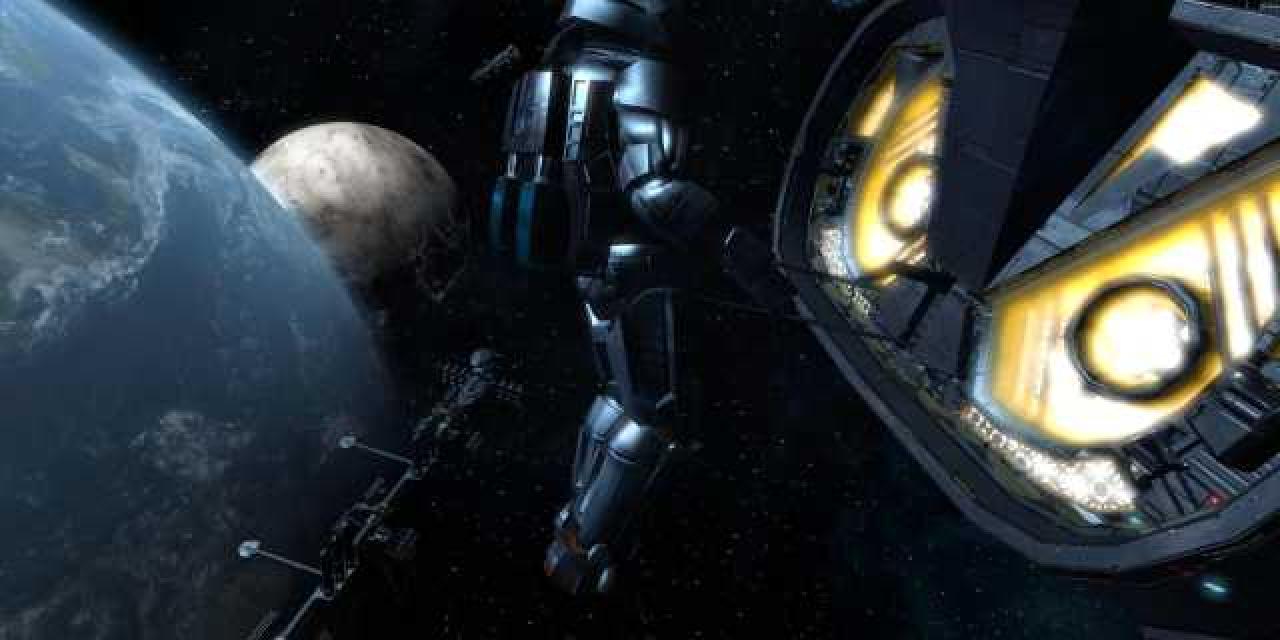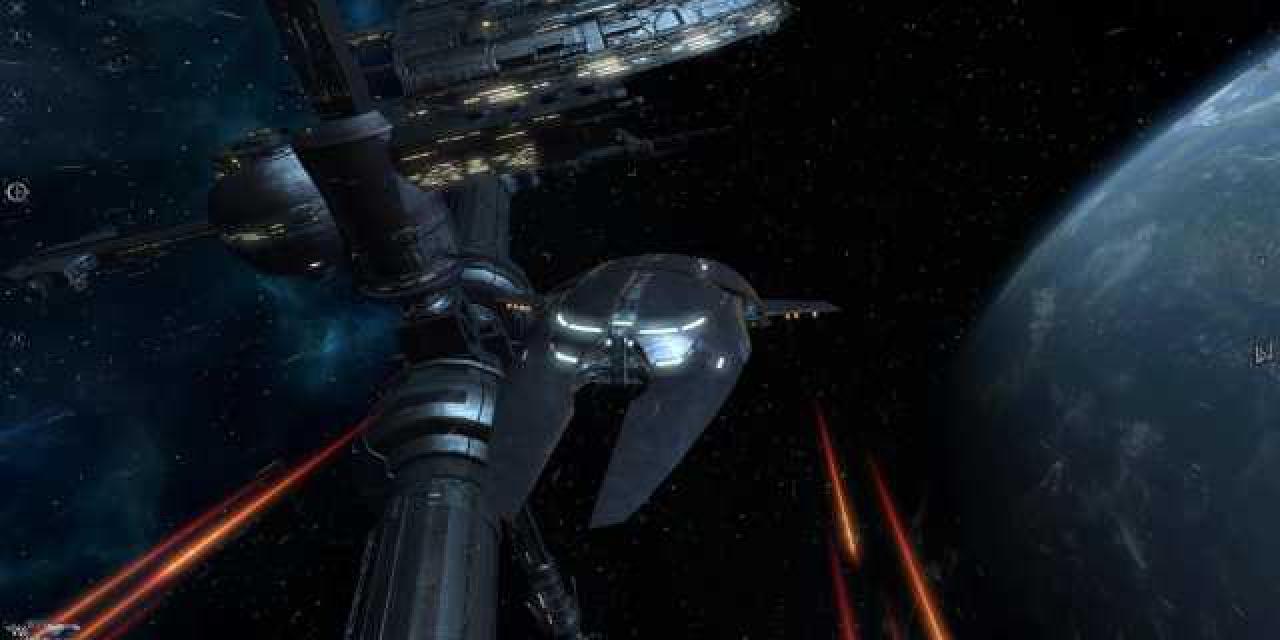

Enlight has announced that X3: Reunion has gone gold for the PC and to mark the occasion X³: Reunion scriptwriter, Andrew S. Walsh, talks about the story, the game design and the challenges of writing for games. X3: Reunion is scheduled to ship to stores on October 21, 2005.
The phone rings. It's April 2004 and spring showers are running down the window. 'Hi, Andy, we've had a look at your stuff and your c.v. and we were wondering...you fancy working on a space game?' Now, I'd grown up running round the garden as Han Solo destroying the Death Star (yeah, I know that was Luke, but who ever pretended to be Luke? You had to be the last kid picked for football before you played Luke). Would I like to do a space game? It's something I'd always wanted to do! That was when I got to know the X-universe.
The first scary bit as a writer is when you get sent the material you're to work on and with X³ it was like having vertigo. A thick bible (every show, series, character/story based game has a bible, a guide that tells you about the characters' history and the world they inhabit) with two games already established in the series; with seven races; six ongoing stories and more star systems than you could shake an Arcturan Megadonkey at, this thing was massive. This was going to be a challenge.
X² THE THREAT: The Story So Far
An outpost of humans have been cut off in a far flung part of the galaxy facing first the threat of the Xenon (X - Beyond the Frontier) a race of terraforming robots turned into destroyers of worlds rather than creators and then the Kha'ak (X²: The Threat) an unknown alien race that has appeared as if from nowhere and seeks to destroy all that stand in their way. The humans here have been separated from Earth for so long that belief in its existence has become limited to a set of monks (the Goner) until Kyle Brennan (the hero of XBTF) pops into the area in an experimental craft. When we reach X², we are several years on and playing Kyle's renegade son Julian. Kyle and Julian have never met, but it is Kyle who pulls his son from a pirate's life and hooks him into his personal quest to find a way to return to Earth. A quest doomed to fail in X² as the story ends with Kyle in a coma after an encounter with the Kha'ak.
X², therefore, had started a lot of stories, but didn't close any of them (it ends with the Kha'ak being defeated in an important battle but with the war still raging). Who are the Kha'ak? Why have they attacked the universe? How can the five loosely allied species (the human Argons, the Paranid, the Teladi, the Split and the Boron) fight against the technologically superior Kha'ak? Is there a way back to Earth? Who is Kyle Brennan and how will Julian and he relate to each other when Kyle recovers? What is the mystery of the A.P. Gunner - the ship Kyle was hunting when he disappeared? Will Julian ever get to sleep with the sexy Saya, or will they just be friends? All these important questions remained unanswered.
No pressure then, especially as a lot of criticism had been levelled at X²: The Threat's script, focussing on its long cut scenes. Great story, but it was slow to unfold. X³ then was to keep the story depth of its predecessors but add a movie style speed of storytelling with short chatty scenes and fast paced action.
The Science of Screenplays
Screenwriting has the reputation of being the most sparing style of script writing. It's about using the fewest words to convey the most meaning. It takes years to master and can trip even the most established professional.
Games are NOT films
Games take the principles of screen writing and then make the whole thing even more difficult. Sparse dialogue and piles of story have to be told in short snippets. The story has to engage the player but not get in their way. The events you choose for the characters have to be not only right for the story, but exciting to play (this is why a lot of Hollywood scriptwriters make bad games writers - they don't understand that games are about the player, not their own vision of what the story could be). Then, once you've thought of an interesting twist to the plot that's fun to play you have to ask the question - can the game engine do it? There's no point writing the scene/level if the game engine won't let you play it, or if it will end up being dull.
So, that was the task... pick up all the ongoing stories, add a new story into the mix and do it with as few words and with as many exciting missions as possible. Oh and one of the main characters (Kyle) - the only one who knows what's going on - is in a coma and can't communicate. The Kha'ak don't talk, so they can't tell you anything and a new mystery character doesn't talk either...simple!
X³ REUNION: The Saga Continues...
So? Where to begin? Egosoft had plenty of ideas and there were the ongoing stories. The first question then was which stories were to be resolved in this game and which were to be left open for X4? Happily, I've worked in television for years and this helped a lot. For all their faults, working on soap operas exposes you to storytelling techniques at high speed. It's a fourteen hour a day job telling stories in soaps, with no time to stop as every week demands four, five, or six new episodes that pay off stories and start new ones (popular UK soap opera Emmerdale goes through six half hour episodes every week, that's the equivalent of writing two feature films in seven days for 52 weeks a year). Starting X³, I did what I did in television, I took a big piece of paper and wrote out the questions and the characters connected to them. I wrote down what we could do and what we couldn't and then together with the Egosoft crew we banged our heads against the wall for six months until we had the final story (story not the script; that still needed finishing!). Story telling...good story telling takes time. It's not about taking the first idea. As the American biographer and Journalist Gene Fowler said 'Writing is easy. All you do is stare at a blank sheet of paper until drops of blood form on your forehead'.
As the Kha'ak and a number of other characters can't talk this means you have to tell the story through other people, it has to unfold like a whodunit. The player flies off into the universe, fighting, building, trading and above all - thinking. What is going on? Bit by bit as each mission unfolds so the mystery reveals answers and deepens with answers throwing up more questions. Because a large number of important characters couldn't talk this reinforced another important rule of writing - show not tell. When writing always look for a way that shows what's happening through what the characters are doing rather than what they're saying. This is another element that's trickier in games than films as you can't predict exactly what the player will do, so when do you allow the player to do what they want and when do you channel them to the things needed for the story? In Grand Theft Auto: San Andreas the player has to complete missions in a certain order to open up the next set of missions. However, missions can be completed in any order within the limits of what the game has opened up and when the player fails a mission they can simply go back and replay it as if this had never happened. In the X-universe the time is real so you can't use this technique, you have to find other ways to keep the story on course.
X³ REUNION: Beyond the Storyline
Once the story was complete the script had to be finished. This meant listening to and reading the dialogue from existing characters to make sure that they sounded and behaved in the way they had done in previous games and then adding new characters that supported and contrasted with the old characters. This can be the most fun, for while I enjoyed writing for characters like Julian, Saya and Noah, there's always something special about characters you create, be it the inexperienced monk Dogun, Don Tony Marani an Italian gangster and scourge of the space lanes, or the fiery Maria Marani they all have to have their own lives and they all need to be established. Any player picking up X³ must be able to get to know the characters (new or established) straight away. The same too with the story, it must be open to new players but reward the fans. And it must avoid all the things people get wrong when doing this - "Yes, son I'm your father and we may have argued for years, but I see a spirit of adventure in you I see in myself. I want desperately to be your father again, but my obsession with Earth keeps me distant from you". Noooooooo!!!!!
So, those were the challenges that were set and the story of how the script was written is the story of how those problems were solved. What did we do? Just pick up a copy of X³: Reunion and find out. The questions the characters ask are the ones we asked, their battles were ours...though sadly I didn't get chance to ask either Saya, or Maria out.
The phone rings. It's September 2005 and autumn showers are running down the window. 'Hi, Andy, we've had a look at your stuff and we were wondering...you fancy an interview about X³?' It's taken 18 months, 160 pages of plot dialogue, 100 + pages of incidental dialogue, 2 ½ weeks in studio recording and quite a few drops of blood on the forehead but now the game's coming out. It's been exciting - I hope you think it is too.
